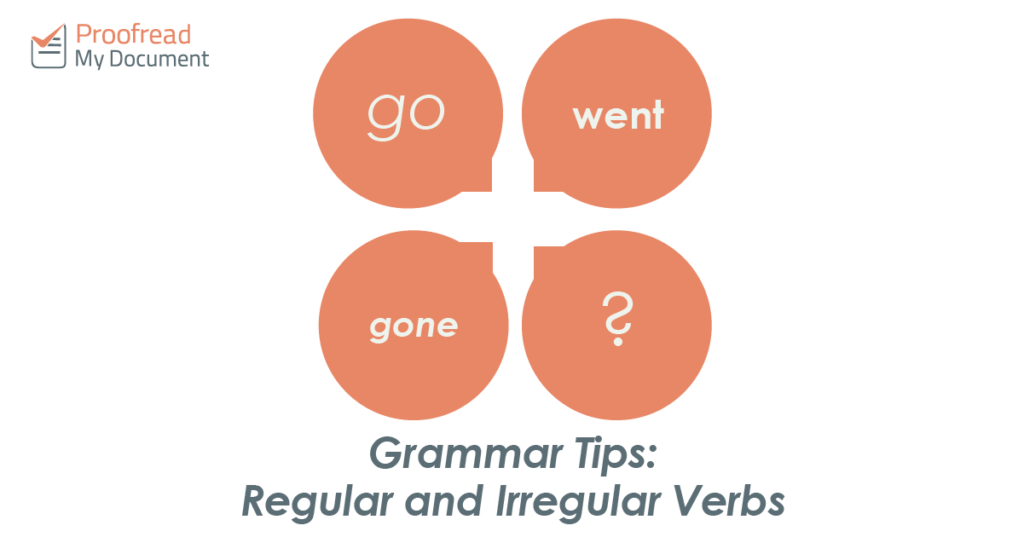Most verbs are fairly well behaved. But there are many that break the rules at every given opportunity. These rebellious words are known as irregular verbs.
Knowing the difference between regular and irregular verbs is therefore important for avoiding mistakes in your writing. To help out, here’s a little grammatical advice.
Regular Verbs
Regular verbs are easy to understand because they all work in a similar way. To be specific, they all end ‘-ed’ when forming past tenses. The simple past tense and past participle of ‘sneeze’, for example, is ‘sneezed’. Other examples include:
|
Base Verb Form |
Simple Past Tense |
Past Participle |
|
Bake |
Baked |
Baked |
|
Hurry |
Hurried |
Hurried |
|
Melt |
Melted |
Melted |
|
Tap |
Tapped |
Tapped |
As you can see, there is some variation in how past-tense forms of regular verbs are formed. This depends on how the base form is spelled.
When a word ends in an ‘e’, for example, we just add a ‘-d’ rather than ‘-ed’. We also change the final ‘y’ to an ‘i’ in some words (e.g. ‘hurried’) or double the final consonant in others (e.g. ‘tapped’).
However, in all cases the simple past tense and past participle forms of regular verbs end ‘-ed’.
Irregular Verbs
With irregular verbs, it’s much harder to find a pattern to how they behave. This is why they’re irregular. If ‘go’ were a regular verb, for example, it would change to ‘goed’ in the past tense. But ‘go’ is an irregular verb, so instead we get ‘went’ (simple past) and ‘gone’ (past participle).
There really are no solid rules for how these terms behave. Other examples include:
|
Base Verb Form |
Simple Past Tense |
Past Participle |
|
Begin |
Began |
Begun |
|
Eat |
Ate |
Eaten |
|
Keep |
Kept |
Kept |
|
Understand |
Understood |
Understood |
As you can see, there are some irregular verbs where the simple past tense and past participle forms are the same (such as ‘kept’ and ‘understood’). But you can’t rely on this being the case. With some words, such as ‘go’ and ‘eat’, the whole word changes in the past tense!
Find this useful?
Subscribe to our newsletter and get writing tips from our editors straight to your inbox.
It is therefore vital to check how a term is used unless you’re 100% certain you already know.
A Note on ‘Be’
Finally, a quick note on one of the trickiest irregular verbs: ‘be’. Although this term is the second most common word in English, it’s also a master of disguise! For example, among other things, it changes its form based upon grammatical person and tense:
|
Variations of ‘Be’ |
First Person Singular/Plural |
Second Person Singular/Plural |
Third Person Singular/Plural |
|
Present Tense |
Am/Are |
Are |
Is/Are |
|
Past Tense |
Was/Were |
Were |
Was/Were |
|
Present Participle |
Being | ||
|
Past Participle |
Been |
It’s only in the infinitive (i.e. ‘to be’) that we see its base form in practice. As such, it pays to double check that you’ve used this word correctly, especially in the subjunctive mood.
